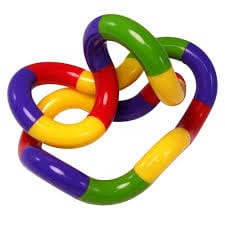Student Contributor: K. Nelson
 Fidgets and stress balls are tools that help children be able to move or do something without being distracting. They aren’t a big object that will take up space. These items may even help children learn better.
Fidgets and stress balls are tools that help children be able to move or do something without being distracting. They aren’t a big object that will take up space. These items may even help children learn better.
When used correctly fidgets and stress balls can be a great way for students to move without distracting their classmates. They need to be quiet and durable. If a teacher gives a fidget or stress ball to a student they should expect that object to be handled and not in a easy manner. For a while fidget spinners were a big deal. However, they make a lot of noise and are very distracting. Fidgets should not have lights, as they would also be found distracting. Objects that can bend, be squished, or taken a part are great ideas for fidgets. Stress balls are great because they are quiet and easy to handle. When used correctly fidgets and stress balls can help students tremendously with staying on task.
 I would put fidgets and stress balls in the Supportive Phase, because it is the best place for it. They allow students to be able to move without the worry of getting in trouble or being a distraction, singled out, or having to try to sit still for an extended amount of time. They help children release pinned up energy. For some students it may help them learn and focus on the task at hand. Fidgets and stress balls could relate to the Preventative Phase, because if a student has an opportunity to be active then they are less likely to need the Corrective Phase.
I would put fidgets and stress balls in the Supportive Phase, because it is the best place for it. They allow students to be able to move without the worry of getting in trouble or being a distraction, singled out, or having to try to sit still for an extended amount of time. They help children release pinned up energy. For some students it may help them learn and focus on the task at hand. Fidgets and stress balls could relate to the Preventative Phase, because if a student has an opportunity to be active then they are less likely to need the Corrective Phase.
This is student-centered strategy, because the teacher is setting the students up for success by letting them use fidgets or stress balls. The teacher is working with the individual student to help them be the best they can be.
More Information –
Tool Source: Gus Nollmeyer


7th grade
About 90 students throughout the entire day
Suburban
In my placement students are allowed to use fidgets in class. Students use bubble pop toys, stress balls, and squishy clay. Students are allowed to use fidgets when they are working independently or in groups, not when the teacher is talking. I have noticed that students can work and play with the fidgets without them becoming a distraction. They have become natural for students, and they are no longer distracted by them. Students understand that if their fidget makes noise, it cannot be used when students or the teacher is talking. However, most of the fidgets students use are silent. Students also know that if they become a distraction, they can no longer use their fidget. I think this has really helped students choose fidgets that are quiet but still effective. I think one adjustment that could be used to make the use of fidgets better would be to keep a collection of fidgets in the classroom. I have noticed that some students that do not have their own fidget sometimes get distracted by the fidgets their peers have. I think if there was a classroom set that students could borrow this may help stop some of the distraction.